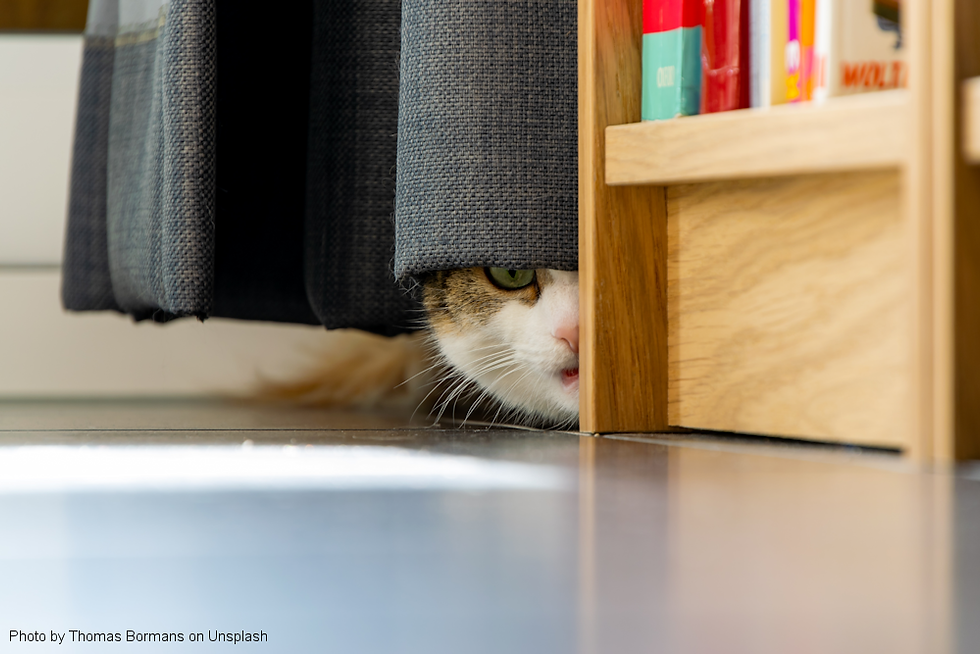Can Cats Track Their Owners’ Movements?
- Honeysuckle Cat Toys
- Nov 15, 2021
- 2 min read
If you’ve ever pondered whether your pet cat gives a whiskers about your whereabouts, research may have an answer: cats appear to track their owners as they move about the house and are surprised if they turn up somewhere they’re not expecting them.
The finding supports the idea that cats retain a mental representation of their owners, even when they can’t see them; a crucial bridge to higher cognitive processes such as forward planning and imagination.
Cats are notoriously inscrutable creatures. Although previous research has suggested that cats will search in the correct place if food is seen to disappear and expect to see their owner’s face if they hear their voice, it was unclear how this ability translated into real life. “It is [also] said that cats are not as interested in their owners as dogs are, but we had doubts about this point,” said Dr Saho Takagi at the University of Kyoto, Japan.
To investigate, Takagi and colleagues recorded what happened when 50 domestic cats were individually shut inside a room, and repeatedly heard their owner calling their name from outside, followed by either a stranger’s voice, or that of their owner, coming through a speaker on the opposite side of the room they were inhabiting.
Eight “blinded” human observers watched these recordings and ranked the cats’ level of surprise based on their ear and head movements. Only when their owners’ voices suddenly appeared inside the room – implying that they had somehow teleported there – did the cats appear confused.
“This study shows that cats can mentally map their location based on their owner’s voice,” said Takagi, whose research was published in the Proceedings of the National Academy of Sciences. “[It suggests] that cats have the ability to picture the invisible in their minds. Cats [may] have a more profound mind than is thought.”
However, it’s not entirely surprising that cats possess this ability: “That awareness of movement – tracking things they cannot see – is critical to a cat’s survival,” said Roger Tabor, a biologist, author and presenter of the BBC TV series Cats.
“A lot of what a cat has to interpret in its territory is an awareness of where other cats are. It is also important for hunting: how could a cat catch a field vole moving around beneath the grass if it couldn’t use clues, such as the occasional rustle, to see in its mind’s eye, where they are? A cat’s owner is extremely significant in its life as a source of food and security, so where we are is very important.”
<img decoding="async" class="lazyload" src="https://static.wixstatic.com/media/68d24d_19315a845f73484aa4c526e70fa73323~mv2.jpg/v1/fit/w_460,h_376,al_c,q_80/file.png" alt="smiling woman holding a can of cat food kneeling down in front of her long haired cat"/>
Article Courtesy of theguardian.com





Comments